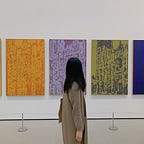Basic Korean Sentence Structure
If you know a lot of Korean words, but don’t really know how to put them into a sentence, today’s lesson is perfect for you! Let’s take a look at the basic structure of Korean sentences!
Basic Korean Sentence Structure: Subject + Object + Predicate (verb / adjective)
Let’s take a look at the meaning of the terms:
- Subject is the person or thing that is being described in the sentence.
- Object is the person or thing that the action is done to.
- Predicate includes verbs and adjectives, and its function is to describe the subject. (For example: what it does, what it is, or what state it is in)
Let’s look at an example:
저는 밥을 먹어요. = I eat.
- Subject 저 + Object 밥 + Verb 먹다 with the polite style sentence ending — 먹어요 *Click here to read about Korean verb conjugations!
- The 는 and 을 here are particles.
In Korean, particles are very important. The most common ones are the particles 은/는 that indicate the topic, the particles 이/가 that indicate the subject, and the particles 을/를 that indicate the direct object. Of course, there are many other particles, such as 에, 에서, 도 and 의 that we talked about before.
Let’s look at another example:
오빠가 멋있어. = Older brother (or when girls are calling an older man) is handsome.
- The subject is 오빠, but there’s no object in this sentence. The sentence ends with the adjective 멋있다, with the casual style sentence ending — 멋있어. Since there’s no verb in this sentence, there’s no object as well. (Remember objects are used to mark the person or thing that the action is done to!)
*Note: 있다/없다 is used as an adjective in Korean
Finally, let’s talk about the sentence pattern of 이다. 이다 is very special, and it’s used differently than the verbs or adjectives. It equals the BE verb in English. The sentence structure is Noun + Noun + 이다. (The polite form of 이다 is 이에요 / 예요)
Example: 저는 학생이에요. = I am a student. *Click here to read about 이에요 / 예요!
